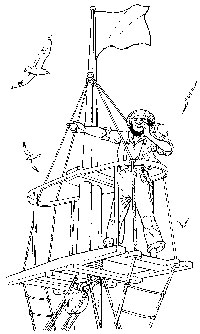F R O M T H E C R O W E ’ S N E S T
The Greatest Fish Farm

The otter trawl arrived in the U.S about 125 years ago.
It marked the beginning of industrial fishing. At the time wizened senior fishermen said the big nets threatened to wipe out the fishery by taking all year classes of targeted and bycatch species. They were right, the resilient resource declined.
Then in the 1970’s our federal government declared a fishing emergency and financed the construction of much larger fishing ships. Not to save the resource, but the U.S. balance of trade. Twenty years later the Gulf of Maine was beat. In just over 100 years an ancient and unparalleled resource went from robust to ruin.
The commerce department has again declared a balance of trade emergency in fish. The rush is on in industrial finfish aquaculture, which as currently practiced is the nuclear energy industry of food production. The product is expensive to produce, demands taxpayer funds to develop, depends on keystone species (herring) for feed and it generates massive amounts of pollution in existing fisheries.
This is not true for all aquaculture. Oysters, mussels, seaweed and clams are filters feeders that improve the marine environment. But the big money for investors and trade is in finfish.
We have a chance to do something right with finfish aquaculture. There is a lot of federal momentum behind big plans to develop it. But our track record with attempts to engineer nature suggests we are more likely to do some thing wrong with it.
Stripping the food supply from other species and dumping the wastes back into theirs and our marine environment may be good for the corporate bottom line, but it is a dead end resource policy. Fish have been raised on land where wastes are contained and recycled. The costs are born by the investors not the ocean and taxpayers. From Love Canal, to the Pacific Garbage Patch, to nuclear waste its out of sight is out of mind with waste.
The ocean is already critically burdened by high acidity, rising water temperatures and pollution. The emergency is not the balance of trade in seafood. The real emergency we face is how to preserve the highly evolved ocean that has provided real food for as long as we humans have been here.
We already have the greatest fish farm in the world in the Gulf of Maine. It needs to be protected, restored and maintained for all of us.
